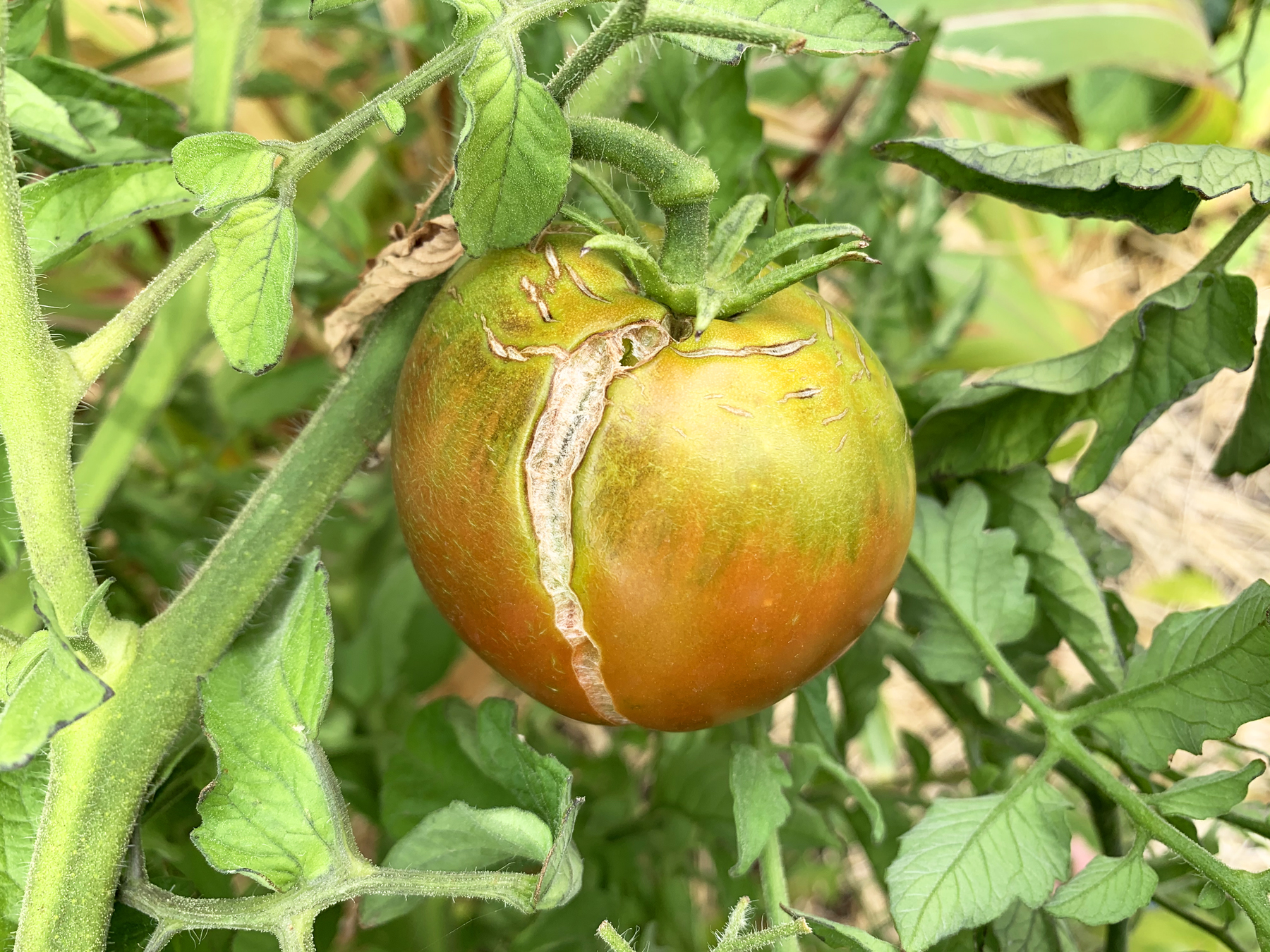My Tomatoes Have the Crud
Contributed by Luke Matthews
Contributed by Paul Buttner
Contributed by Tim Johnson
We bet you went out to look at your tomato plants at some point in the couple of weeks and wondered what kind of crud was infecting them. Us too (well maybe except Luke!). Here is a look at our tomatoes, what we see and how to fix the common problems.
Diverse Urban Garden – Luke Mathews, Wildlife Program Manager

Heat is the largest issue that I have been battling here in Sacramento. Over the past few weeks we have experienced multiple days with temperatures of up to 105 degree Fahrenheit. These high temps in combination with an evening breeze can rapidly dry out the soil and has slowed production in our ‘diverse urban garden’. On these high heat days our egg production is typically reduced by half and the bees spend less time foraging and more time collecting water to cool their hive. In the garden production in our tomatoes, cucumbers, green beans, and melons has slowed or suffered losses due to this heat.
While overall I have had quite the bumper crop of tomatoes this year; however, my large tomato varieties have started to split before they are ripe. Splitting in tomatoes is typically caused by an inconsistent and irregular watering schedule. I started off the season by watering my tomato plants once a week and I did not make any adjustments during the heat wave. This insufficient irrigation schedule resulted in the soil completely drying out in-between irrigations, which unfortunately caused many of my tomatoes to start splitting. To mitigate this issues, I have increased my irrigation to 2-3 times per week and I will continue to monitor and adjust my watering routine based on soil moisture and weather.
If you are also having this issue, be sure to adjust your watering schedule to prevent any further fruit damage. Also keep in mind that you can eat green tomatoes, so I recommend cutting all of the split tomatoes to prevent them from rotting on the vine.
Large Rural Garden – Tim Johnson, President & CEO

I have been doing a better job watering this year after last year’s disaster with blossom end rot. Fully 50 percent of the fruit had some level of rot. Lots of cutting off ends and a lot of fruit lost. The best solution to this very common problem is regular, deep watering. My schedule is once a week on Thursday (but you can pick any day of the week). You can also hit them with a foliar spray that contains calcium in the cool of the day.
While I have a plan for the blossom end rot, the plants are looking thin and spindly. This is probably a nutrient problem so I will add a liquid fertilizer to the weekly drip irrigation and add some liquid calcium as extra insurance, as well. I’ll also increase my scouting/trapping for gophers, as they can really prune the roots.
New Garden – Paul Buttner, Environmental Affairs Manager

Unlike Tim, I have “crudless” (if that’s a word) beautiful tomatoes. In fact, I’m eating one right now while writing this chapter of our three dude’s gardens saga. I thinly sliced it for my turkey sandwich and then ate the rest thickly sliced with a hint of salt. I love eating tomatoes that way. It reminds me of my Mother who introduced me to that as a little boy. Just one of many special things we shared together. As you can see, I have many tomatoes and they have just started ripening, so I’ll be good on tomatoes for quite a while. Yum!
All is not this awesome in my garden, however. Early on, I had similar problems to Tim with some sparse and brown plant growth. This quickly resolved itself as I significantly stepped up my watering schedule. Being raised beds with pretty low volume micro sprayers, I actually stepped up to 2 times per day for 15 min and then a deep soaking with the hose 1-2 times per week. Now my watering-related sick plant woes are gone. However, I am struggling with some leaf-eating insects and what I think are some fungal impacts. To keep my lofty status as an “organic” garden intact, I have started to use a product called Neem Oil which seems to be helping. My garden beans seem to be most impacted by these pest problems.
Well, off to eat some more sliced and salted fresh tomatoes and hope that Mom is smiling down upon me. Good luck in your gardening and the memories it can bring for you!
Here are some great resources for tips on correcting the most common tomato problems.
5 Common Tomato Problems and Solutions
Tomato Trouble Shooting Tips – Farmer Fred
